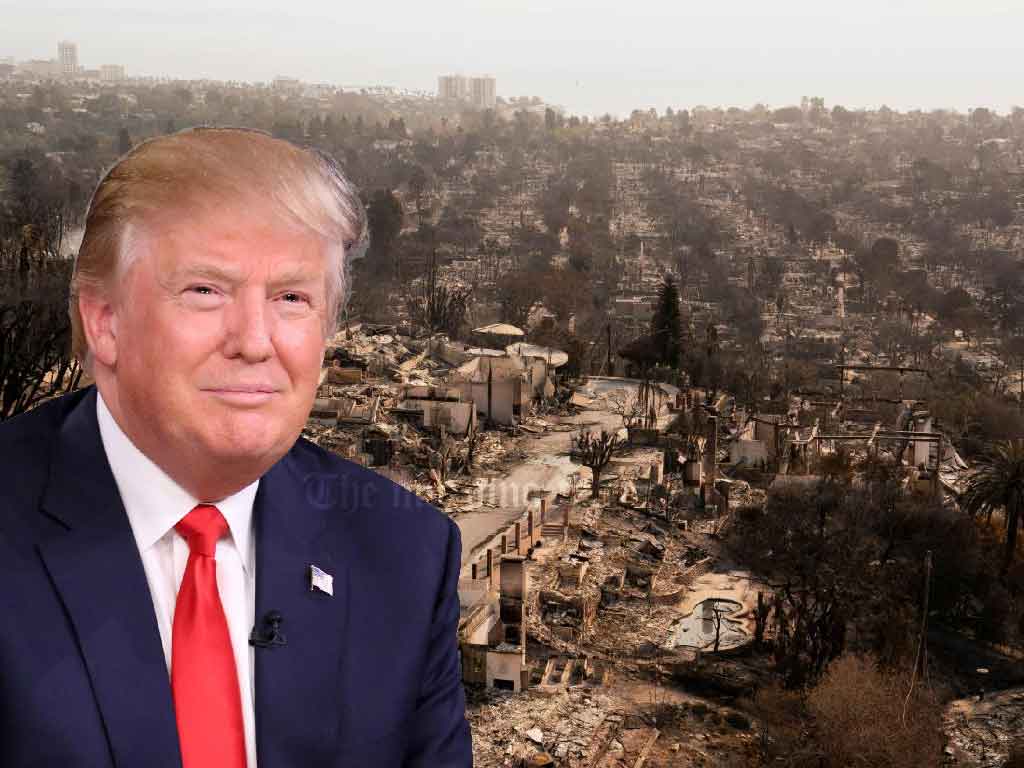
President Donald Trump visited Los Angeles to assess the extensive damage caused by wildfires that have devastated Southern California since early January. The fires have claimed 28 lives, with 22 individuals still missing, and displaced thousands of residents. Trump’s visit has sparked controversy following his earlier remarks suggesting he may overhaul or abolish the Federal Emergency Management Agency (FEMA), a move criticized by local officials and disaster response experts.
As of Thursday, the death toll from the fires had risen to 28, with more than 50,000 residents placed under evacuation orders or warnings. Firefighters are working tirelessly to contain the flames, battling strong winds gusting up to 42 mph, which are expected to increase to 60 mph in the coming hours. This volatile weather, combined with dry conditions, continues to hinder containment efforts.
However, progress has been made on certain fronts. Containment levels have reached 91% for the Eaton Fire and 68% for the Palisades Fire, according to officials. Firefighting aircraft and ground crews have concentrated their efforts on the southern edge of the fires, where flames were spreading most rapidly.
Rain and mountain snow are forecast from Saturday to Monday, which could provide some relief to firefighters. However, the wet weather also raises the risk of mudslides in fire-scarred areas, posing new threats to residents and complicating disaster management efforts. Los Angeles Mayor Eric Garcetti emphasized that while the rain might aid firefighting efforts, it could create additional hazards for already displaced communities.
The wildfires began in the first week of January, fueled by powerful offshore winds and extremely dry conditions. The Eaton and Palisades fires, among the most destructive, have collectively destroyed over 14,000 structures and displaced tens of thousands of residents. These fires, active for more than two weeks, have been exacerbated by California’s cyclical climate patterns, characterized by alternating periods of severe drought and heavy rainfall.
While the exact cause of the fires remains undetermined, experts suggest that the heightened wildfire risks are a result of climate change and poor forest management practices. Similar patterns of fire activity have become increasingly common in California over the past decade, leading to calls for more robust fire prevention strategies.
Trump’s visit has drawn criticism from some local leaders, who argue that his administration’s stance on climate change and disaster management has undermined efforts to mitigate wildfire risks. His remarks about FEMA have further fueled tensions, with critics pointing out the agency’s critical role in coordinating disaster relief and recovery efforts.
Residents and community leaders have also expressed frustration over the slow pace of recovery and the long-term impacts of the fires. Displaced families face uncertain futures, with many losing their homes and possessions. Aid organizations and local governments are scrambling to provide temporary housing and resources to those affected.
The Los Angeles wildfires serve as a stark reminder of the growing challenges posed by climate change, urban expansion, and resource mismanagement. While progress has been made in containing the fires, the road to recovery will be long and complex. Efforts to rebuild communities, restore ecosystems, and implement preventive measures will require significant investment and collaboration among federal, state, and local governments.
As the fires continue to burn and displaced families await assistance, the focus remains on immediate containment efforts and addressing the risks posed by the impending rains. The resilience of the affected communities and the effectiveness of disaster response strategies will ultimately shape the region’s ability to recover from this crisis.




